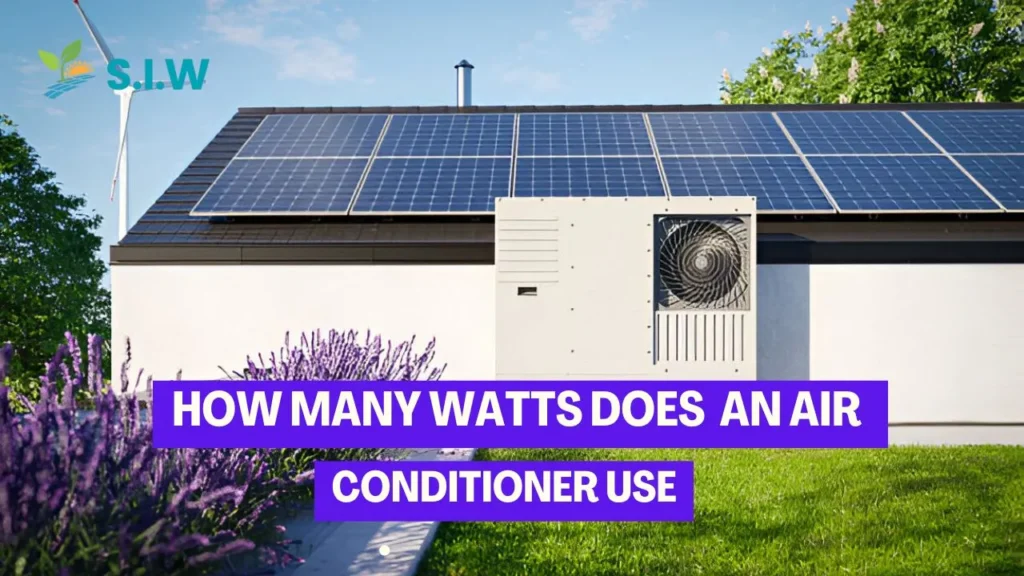Understanding the power consumption of air conditioners is crucial for both energy efficiency and cost management. In this comprehensive guide, we will delve into the intricacies of how many watts different types of air conditioners use, factors influencing their power consumption, and tips to optimize their efficiency.
Types of Air Conditioners and Their Wattage
Window Air Conditioners
Window air conditioners are a popular choice for cooling single rooms. The wattage of these units typically ranges from 500 to 1500 watts, depending on their size and cooling capacity. For example, a small 5,000 BTU (British Thermal Units) window air conditioner may use around 500 watts, while a larger 12,000 BTU unit could consume approximately 1,500 watts.
Portable Air Conditioners
Portable air conditioners offer flexibility as they can be moved from room to room. Their power consumption is generally higher than window units due to their mobility and additional features. Portable solar panel air conditioners can use between 900 and 1,700 watts. A 10,000 BTU portable air conditioner, for instance, might use around 1,200 watts.
Split System Air Conditioners
Split system air conditioners are common in homes and offices, consisting of an indoor unit and an outdoor compressor. These systems are more energy-efficient and provide better cooling performance. The wattage for split systems can vary widely, ranging from 700 to 2,000 watts. A 24,000 BTU split system might consume around 2,000 watts.
Central Air Conditioning Systems
Central air conditioning systems are designed to cool entire homes. They are the most energy-intensive, with power consumption typically ranging from 2,000 to 5,000 watts. A 3-ton central air conditioning unit, equivalent to 36,000 BTU, can use approximately 3,500 watts.
Factors Influencing Air Conditioner Wattage
BTU Rating
The BTU rating is a measure of an air conditioner’s cooling capacity. Higher BTU ratings indicate greater cooling power, which usually translates to higher wattage. It’s essential to select an air conditioner with an appropriate BTU rating for the space you intend to cool to avoid unnecessary energy consumption.
EER and SEER Ratings
The Energy Efficiency Ratio (EER) and Seasonal Energy Efficiency Ratio (SEER) are indicators of an air conditioner’s energy efficiency. Higher EER and SEER ratings mean the unit uses less power to achieve the same level of cooling. Choosing an air conditioner with high EER or SEER ratings can significantly reduce energy consumption.
Usage Patterns
The frequency and duration of use directly impact power consumption. Running an air conditioner continuously at maximum capacity will use more watts compared to intermittent use. Utilizing programmable thermostats and timers can help manage and reduce energy usage.
Environmental Factors
External temperatures, humidity levels, and insulation quality of your home also affect how hard an air conditioner has to work, influencing its wattage. Proper insulation and sealing of windows and doors can help maintain indoor temperatures and reduce the load on your air conditioner.
Calculating Air Conditioner Power Consumption
To calculate the energy consumption of an air conditioner, you can use the following formula:
Energy Consumption (kWh) = Wattage (W) x Hours of Use / 1000
For example, if you run a 1,200-watt air conditioner for 8 hours a day, the calculation would be:
1,200 W x 8 hours / 1000 = 9.6 kWh per day
By understanding this formula, you can estimate the daily, monthly, or yearly energy consumption of your air conditioner and manage your energy costs more effectively.
Tips to Optimize Air Conditioner Efficiency
Regular Maintenance
Performing regular maintenance on your air conditioner can ensure it operates at peak efficiency. Cleaning or replacing filters, checking refrigerant levels, and inspecting ducts and coils can help maintain optimal performance and reduce power consumption.
Smart Thermostats
Installing a smart thermostat allows you to set schedules and remotely control your air conditioner’s temperature settings. This can prevent unnecessary usage and lower energy consumption.
Energy-Saving Modes
Many modern air conditioners come with energy-saving modes that adjust cooling intensity and fan speeds to conserve power. Utilizing these settings can help reduce wattage without compromising comfort.
Ceiling Fans
Using ceiling fans in conjunction with your air conditioner can improve air circulation and allow you to set the thermostat at a higher temperature, reducing the overall wattage used.
Insulation and Window Treatments
Improving the insulation of your home and using window treatments such as blinds and curtains can prevent cool air from escaping and reduce the strain on your air conditioner, thus lowering its power consumption.
Conclusion
Understanding the wattage of air conditioners is essential for managing energy use and reducing costs. By choosing the right type of air conditioner, maintaining it properly, and employing energy-saving strategies, you can optimize its efficiency and enjoy a comfortable indoor environment without excessive power consumption.








